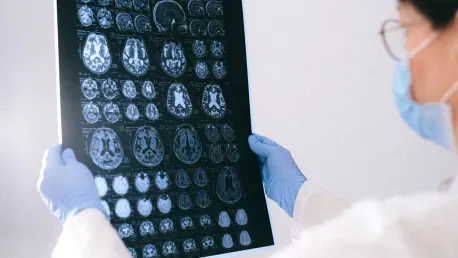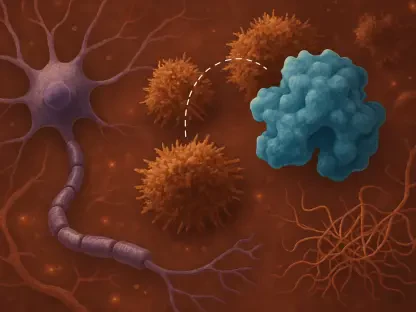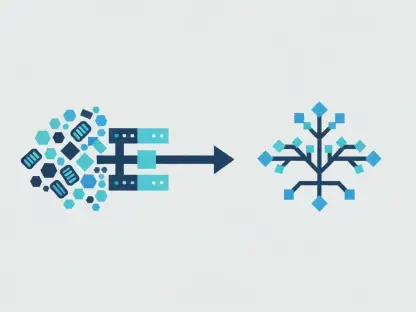The landscape of Alzheimer’s disease (AD) diagnosis and treatment is undergoing a significant transformation thanks to the groundbreaking Simoa® technology by Quanterix. This ultra-sensitive immunoassay platform is reshaping how biomarkers are identified and validated, offering new possibilities for researchers and clinicians. David Wilson, Vice President of Clinical Strategy at Quanterix, highlights the pivotal role of Simoa in advancing neurological research and drug development. With its extraordinary sensitivity, Simoa is enabling the detection of biomarkers at levels previously undetectable by traditional methods, making it a game-changer in the early and precise diagnosis of AD and other neurodegenerative diseases.
The Power of Ultra-Sensitive Detection
Simoa’s digital immunoassay technology stands out for its exceptional sensitivity, being up to 1,000 times more sensitive than conventional immunoassays. This heightened sensitivity allows for the detection of low-abundance biomarkers in fluids such as plasma, cerebrospinal fluid (CSF), and serum. Traditional methods often fail to capture these biomarkers at such low concentrations, making Simoa a game-changer in early and accurate diagnosis. By detecting these low-abundance biomarkers, researchers can gain a deeper understanding of disease progression and develop more targeted treatments. The ability to detect single molecules is particularly significant in neurological biomarker research. Minor changes in proteins like neurofilament light (NF-L) are crucial for diagnosing diseases such as AD, multiple sclerosis (MS), and traumatic brain injury (TBI).
Simoa’s technology enables the measurement of these biomarkers at previously unachievable levels, facilitating earlier intervention and better patient outcomes. This level of detection allows researchers and clinicians to track subtle changes in biomarker levels, providing critical insights into disease progression. Simoa’s technology also opens new avenues for developing treatments that target these biomarkers, potentially leading to more effective therapies for neurodegenerative diseases. The exceptional sensitivity of Simoa’s digital immunoassay technology is transforming the field of neurological research and offering hope for more accurate and timely diagnoses.
NF-L: A Key Marker in Neurodegenerative Diseases
Neurofilament light (NF-L) is a protein released following axonal damage and serves as a key marker in various neurodegenerative diseases. The Simoa NF-light® assay allows researchers to quantify NF-L levels in both human and animal samples. This capability is essential for tracking subtle changes indicative of early neurodegenerative activity. By quantifying NF-L levels, researchers can monitor disease progression and evaluate the effectiveness of new treatments. This early detection is particularly beneficial for diseases like Alzheimer’s, where early intervention can slow disease progression and improve quality of life.
Early diagnostic capability is crucial for timely intervention, significantly improving patient outcomes. The ability to measure NF-L levels at such low concentrations with Simoa’s technology provides researchers and clinicians with the early diagnostic capabilities needed to intervene at the earliest stages of neurodegenerative diseases. This leads to better patient outcomes and a higher quality of life for those affected. Simoa’s technology is revolutionizing how researchers and clinicians approach diagnosing and treating neurodegenerative diseases, offering new hope for patients through early detection and intervention.
Pioneering Alzheimer’s Research
Simoa technology is at the forefront of pioneering Alzheimer’s research, revolutionizing disease diagnosis and treatment. Esteemed scientists like Dr. Kaj Blennow and Dr. Henrik Zetterberg have utilized Simoa technology to verify blood-based biomarkers for AD. This research is pushing forward the possibility of early and non-invasive diagnosis, which is crucial for implementing effective treatments in the early stages of the disease. The development of blood-based biomarkers like pTau181 and pTau217 has profoundly impacted the field. These phosphorylated tau proteins are critical indicators of amyloid pathology, a key feature of AD.
The pTau-181 assay, designated as a Breakthrough Device by the FDA, offers more effective diagnoses of life-threatening diseases. Blood-based tests like the Simoa® LucentAD p-Tau217 test might eventually replace more invasive diagnostics such as lumbar punctures or expensive PET scans. Using Simoa technology, researchers can monitor tau concentrations in blood samples, providing a non-invasive, cost-effective means for tracking disease progression. This has the potential to revolutionize the diagnostic process, making it more accessible and reducing the burden on patients and healthcare systems.
From Preclinical Research to Clinical Application
Simoa technology is extensively used across all research stages, from preclinical research to clinical application. During preclinical trials, researchers use Simoa homebrew kits to create custom assays for newly discovered biomarkers. This process is integral to discovering and validating proteins like pTau217, now essential in Alzheimer’s research. By developing these custom assays, researchers can test and validate new biomarkers, providing crucial insights into disease mechanisms and potential therapeutic targets.
Once biomarkers like pTau217 are validated, Simoa bead technology ensures their continued use in clinical trials. The Simoa® HD-X Analyzer™ supports simultaneous multiplexing of various biomarkers, valuable in clinical trials where multiple disease markers must be monitored concurrently. This multiplexing capability offers a comprehensive view of disease progression, aiding researchers in measuring new therapies’ effectiveness. The ability to monitor multiple biomarkers simultaneously provides a holistic understanding of the disease and its dynamics, enabling the development of more precise and effective treatments.
Real-World Applications and Future Prospects
In real-world applications, Simoa assays have been instrumental in tracking key biomarkers in patients undergoing Alzheimer’s treatment. For instance, in the Eisai lecanemab Phase III trial, Simoa assays provided critical data on target engagement and treatment efficacy. By comparing biomarkers in treated patients versus control group members, researchers gathered invaluable insights into how a drug interacts with disease biology. These insights are critical for developing new therapies and optimizing existing treatments, ensuring better outcomes for patients.
Looking toward the future, Simoa’s role in drug development and patient management is poised to expand further. As blood-based biomarkers continue to be refined, their impact on patient care will grow exponentially. These biomarkers provide an unprecedented ability to monitor treatment efficacy in real time, helping clinicians adjust treatments or dosages based on patient responses. For Alzheimer’s patients, the benefits are substantial. Non-invasive, blood-based tests like the Simoa LucentAD p-Tau217 could make early detection more accessible and affordable, enabling more patients to start treatment sooner and potentially slowing disease progression. Wilson envisions these tests becoming routine in clinical settings, allowing primary care physicians to perform early Alzheimer’s diagnostics.
Integration into Mainstream Healthcare
The landscape of diagnosing and treating Alzheimer’s disease (AD) is experiencing a major shift due to the innovative Simoa® technology developed by Quanterix. This ultra-sensitive immunoassay platform is revolutionizing the identification and validation of biomarkers, offering numerous new opportunities for researchers and clinicians alike. David Wilson, Vice President of Clinical Strategy at Quanterix, emphasizes the crucial importance of Simoa in advancing neurological research and drug development. With its exceptional sensitivity, Simoa allows the detection of biomarkers at levels that were previously impossible to identify using traditional methods. This capability makes it a breakthrough tool in the early and accurate diagnosis of AD and other neurodegenerative disorders. Essentially, this technology is not only opening new avenues for scientific understanding but also paving the way for more effective treatments, thereby transforming patient care and management in the realm of neurodegenerative diseases.









